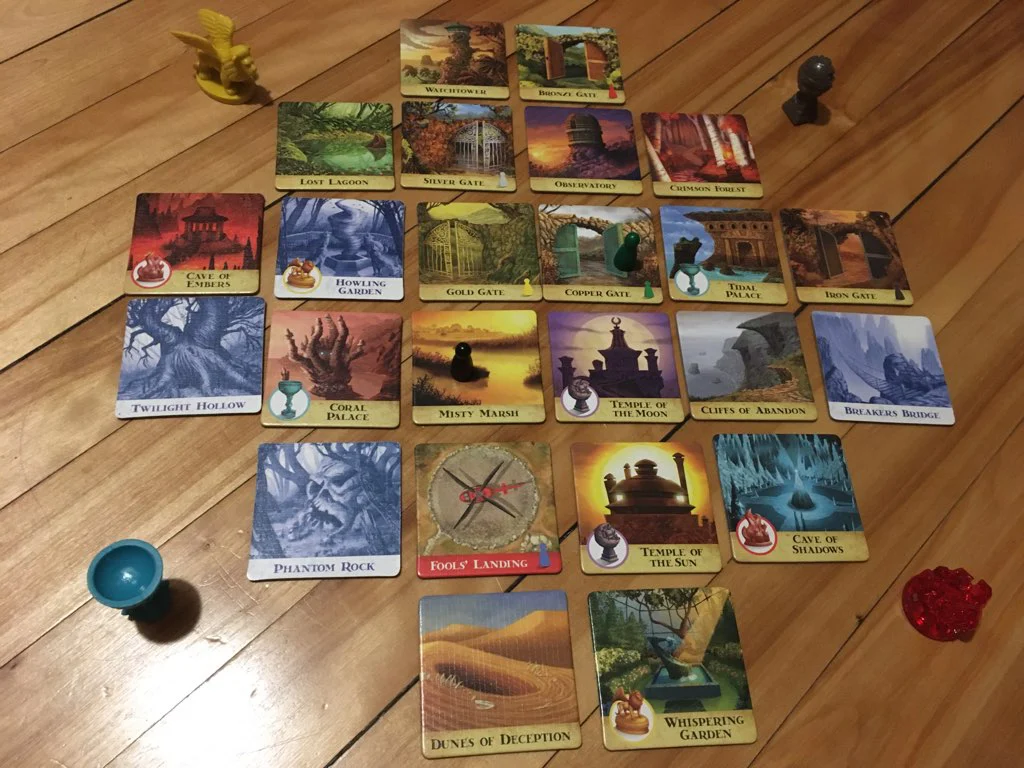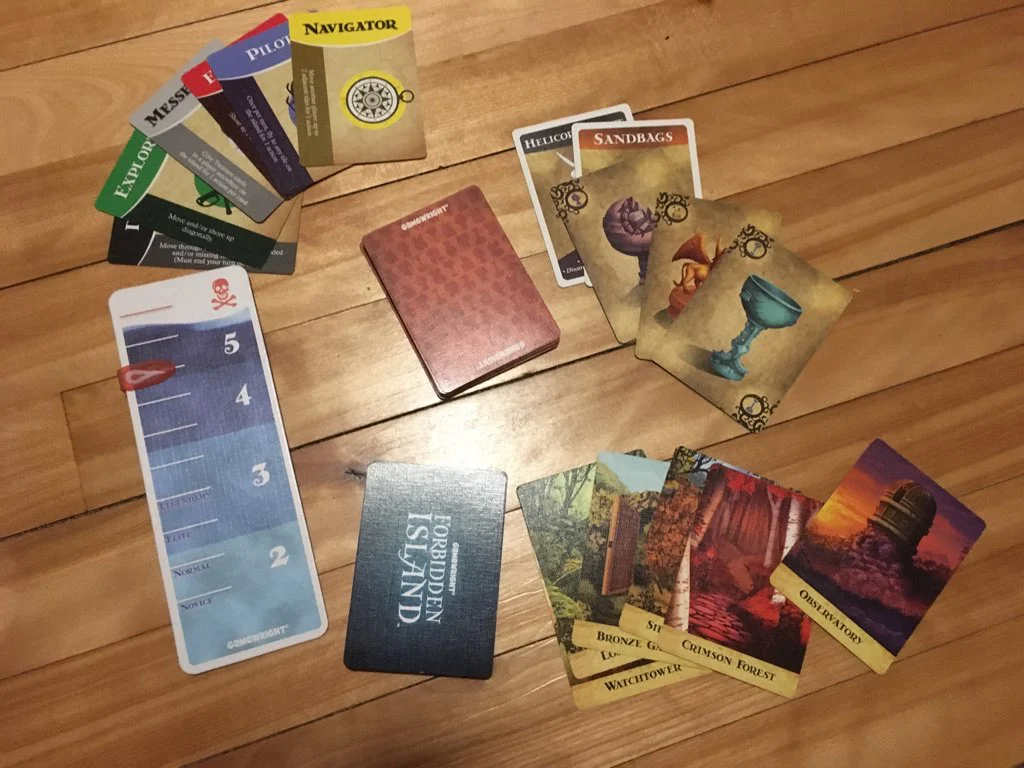by Rebeca Hulme
Why I Love It.
What Is It?
Let's talk about game mechanics. Besides the artwork that deserves endless praise, Forbidden Island is a master at setting up unique player experiences with every game. The island is created with 24 landmark tiles that are randomly placed at set-up, ensuring players always have a different path to success. On top of that, each player is assigned a random adventurer ability: pilot, explorer, diver, navigator, messenger, or engineer. As the Diver or Pilot, players have access to parts of the island that become estranged through flooding. The Explorer, with his keen sense of adventure, has the ability to move diagonally rather than following the straight trails of other team members. While some of these roles may significantly increase your odds of escaping the island as a hero of history, players can still expect to be caught off guard by a number of other rapidly changing factors, such as the randomization of the treasure and flood decks and the sudden appearances of "Water Level Rises" cards. These fateful cards make their show stopping appearance at the least opportune time - perhaps when you are trying to bail out your only means of escape or when you are frantically trekking across the island to claim a treasure from the last remaining collection spot - and unless you've been hoarding sandbags, they may mean losing another breathtaking landmark on the increasingly diminishing island.

Your team dynamic also greatly influences your success rate, and open communication becomes crucial for survival. Unlike some other cooperative games, this game is unique in its division of tasks and responsibilities. For example, you may decide to collect the fire element while a teammate chases after the wind. However, you aren't fighting an uphill battle alone, and mirroring the best versions of life, you are always invited to reach out to teammates for helping hands or to reevaluate shifting priorities. The success or failure of a mission does not fall on one person's shoulders, and as someone who can become easily discouraged in situations where I'm not contributing equally, the ability to share that responsibility is comforting.
Your First Game.
Matt Leacock did a fantastic job mimicking the panic of rising water tables by flooding the island in stages. When the low spots of the island begin sinking, you have the opportunity to rush into action saving as many landmarks from watery ruin as possible. Each turn, as you draw flood cards corresponding to the number on the Water Level table, you flip over landmark tiles to show which areas are slowly filling with water. At first, the flooding seems manageable. You can hustle over to the landmark and "shore it up," rescuing it from complete oblivion for the time being. Water is a force to reckon though, and parts of the island that were previously susceptible to flooding often become the first to completely disappear. As game play progresses, the pace of flooding gains momentum. You then have to make critical decisions about which tiles to save. While you may decide to simply prioritize the treasure tiles and the Fool's Landing launch pad, you will quickly realize that you need a larger vision to be successful in this game. Forbidden Island is a balance of priorities, communication, and action - all critical skills that can be transferred to real world situations.

Going Further.
Feel free to experiment with strategy. Averaging 30 minutes, this game tends to run on the shorter side for a collaborative game and offers the opportunity to put various tactics to the test without becoming overwhelming. Explore different difficulty levels and player numbers. Get lost in the artwork - especially during this time when imagination and creativity have become such important coping mechanisms to many of us. Forbidden Island is both a visually and mentally satisfying journey encouraging real life skill development. If you're feeling inspired, venture into another kingdom created by Matt Leacock and C.B. Canga. Forbidden Desert and Forbidden Sky endure constant comparison to Forbidden Island, and even though I cannot yet vouch for Matt Leacock's more recent games, you may decide to brave a step there on your own.
The opinions in this post are expressly the views of the author and do not reflect the views of their employer(s) or any entities that they might otherwise be affiliated.